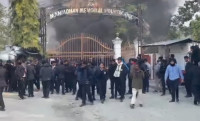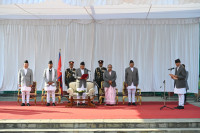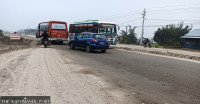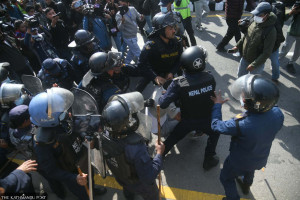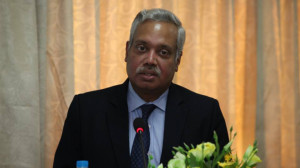National
Open-air jet repair exposes Kathmandu airport’s limitations
A Cathay Pacific plane remains grounded at Tribhuvan airport for two weeks, with its engine replaced outdoors.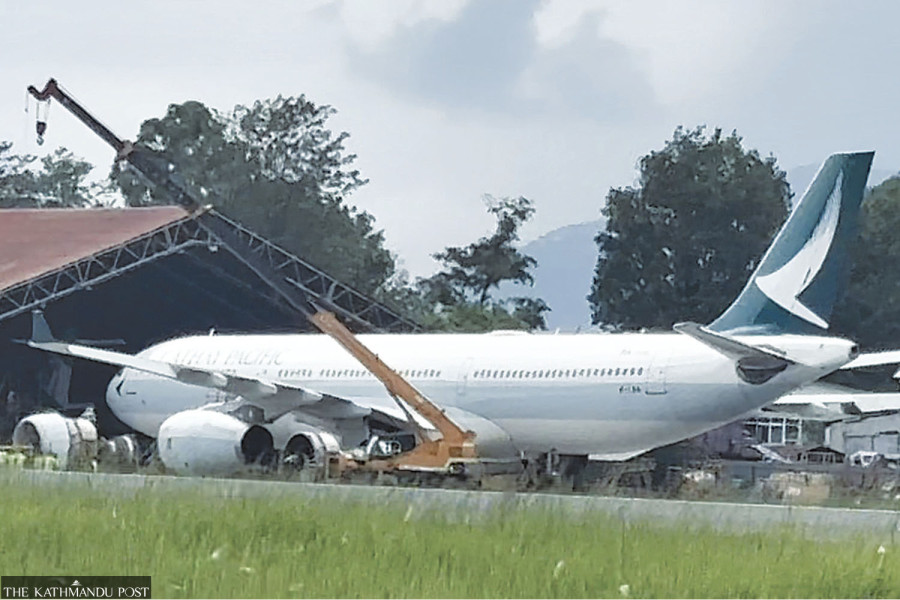
Suraj Kunwar
In a rare and rather dramatic sight for many at Tribhuvan International Airport (TIA), the open-air engine replacement of a wide-body aircraft of Hong Kong's flag carrier Cathay Pacific is captivating aviation enthusiasts, airport workers and travelers alike.
For nearly two weeks, a Cathay Pacific Airbus A330 bearing the call sign “Bravo-Lima Bravo Hotel” has been grounded at the TIA. Work of detaching its left engine has been completed in front of Nepal Airlines’ maintenance hangar. The massive engine, weighing about 12 tons, had to be replaced after an unexpected malfunction during a routine departure to Hong Kong.
On the night of July 11, the aircraft, carrying 310 passengers, had completed all pre-flight procedures and was being pushed back from the apron towards the taxiway. As the pilots powered both engines to move towards the runway, the left engine suddenly malfunctioned, forcing the crew to abort the takeoff.
“There was no prior report of engine trouble when the aircraft landed in Kathmandu from Hong Kong earlier that evening. The pilot reported the issue just before entering the runway and sought permission to return the aircraft to the apron,” said a senior air traffic controller at the TIA.
Cathay Pacific sources confirmed the failure was entirely unexpected and it had not been flagged during previous servicing. The engineer on board attempted minor repairs but deemed the issue too complex. The captain recorded the engine problem in the aircraft logbook, and the plane was officially declared grounded. The passengers were deboarded and alternative travel arrangements began.
With no immediate aircraft available to replace the grounded flight, Cathay Pacific arranged accommodation for passengers at Radisson Hotel in Lazimpat and at Soaltee Hotel in Kalimati. The 12-member crew, who were scheduled to rest at the Hyatt Hotel in Bauddha, also had to stay with passengers in Radisson due to room unavailability.
Most of the stranded passengers were flown to Hong Kong over the next two days via scheduled and special ferry flights. On July 13, Cathay Pacific operated a dedicated ferry flight to accommodate remaining travelers.
After nearly two weeks, on Thursday, Cathay Pacific flew in a spare engine using one of its Boeing 747-400 cargo aircraft. The 747-400 is one of only six such cargo planes in Cathay’s 179-aircraft fleet and is slightly smaller than the airline’s larger 747-800 series. Kathmandu’s airport cannot accommodate the newer 747-800 cargo jets due to limited parking space, making the older 747-400 a more feasible option.
“This particular cargo aircraft had been scheduled to transport electronics, garments, pharmaceuticals and machinery to destinations like New York, Milan and Toronto,” said a source familiar with the operation. “Cathay Pacific rearranged its fleet to divert this aircraft to Kathmandu with the 12-ton replacement engine on board.”
Once delivered, Cathay’s technical team began the engine replacement in front of Nepal Airlines’ hangar. The removed engine, still considered airworthy, was sent back to Hong Kong on Friday for maintenance at Cathay’s state-of-the-art maintenance facility. The engine, a Rolls-Royce Trent model, is expected to be repaired and returned to service.
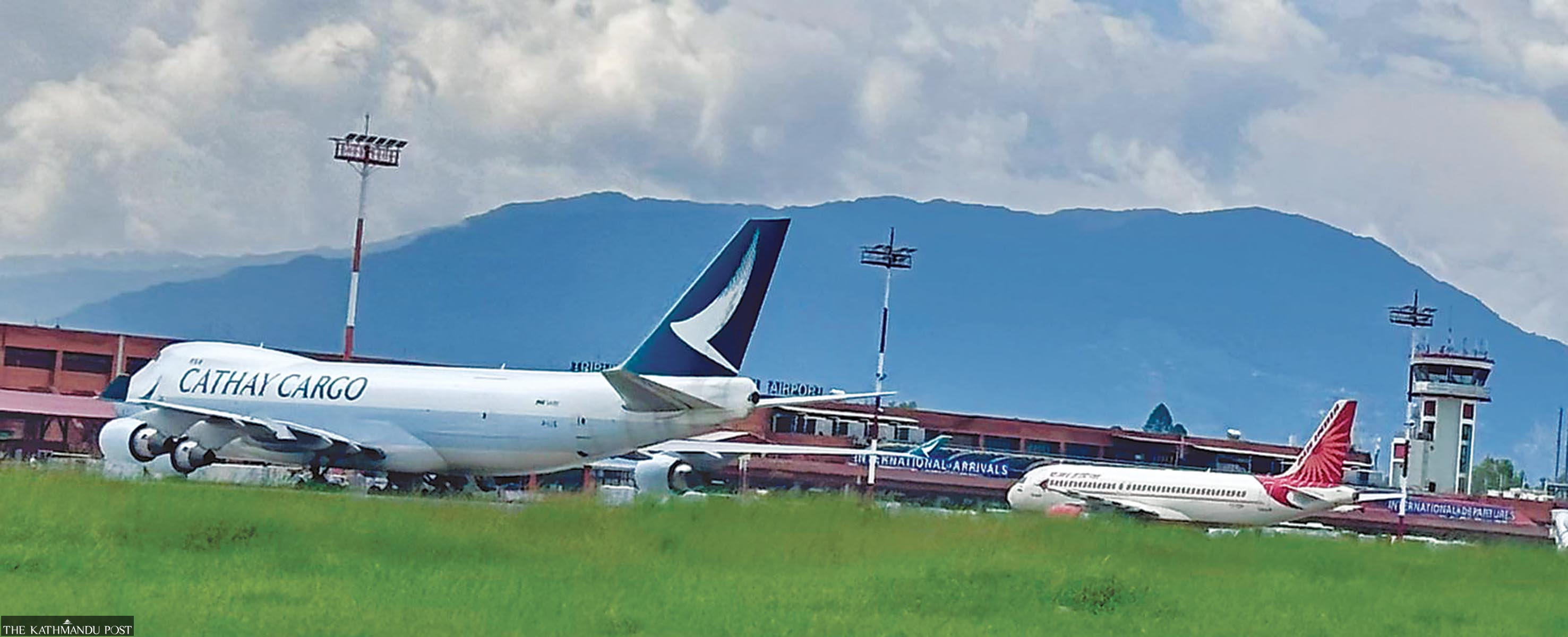
The incident highlighted significant logistical challenges at Tribhuvan International Airport. The grounded wide-body jet occupied valuable parking space for 14 days, causing congestion and delays for other aircraft. Airport authorities tried to move the aircraft to various remote parking zones, including near the Nepal Oil Corporation depot and the northeastern apron area. However, Cathay Pacific declined these requests, opting instead to pay full parking fees to keep the aircraft on the main apron.
“After Cathay’s cargo aircraft arrived carrying the spare engine, their grounded wide-body plane was moved in front of the Nepal Airlines hangar. The Nepal Airlines aircraft previously parked there was shifted to the parking space where the Cathay aircraft had been stationed,” said Hanshraj Pandey, general manager of Kathmandu Airport. Airport authorities did not allow Cathay Pacific to replace the engine at its original parking spot.
This episode has stressed the urgent need for an international-standard hangar facility in Nepal for large aircraft maintenance. Due to the absence of such infrastructure, Cathay Pacific could not obtain approval to conduct a full engine overhaul in Kathmandu. Instead, technicians were allowed only to perform the basic installation under open skies—an operation rarely permitted, especially during monsoon.
Aviation experts recall a similar incident before the Covid-19 pandemic, when an Etihad Airways aircraft remained grounded for several days after an engine issue.
Although there are a few small workshops for foreign Maintenance, Repair and Operations within the seven-decade old Tribhuvan International Airport compound, they are primarily limited to light servicing. Spare parts and essential tools for wide-body aircraft are almost entirely absent in Nepal, leaving airlines with little choice but to fly in parts and equipment when technical emergencies arise.




 18.12°C Kathmandu
18.12°C Kathmandu


